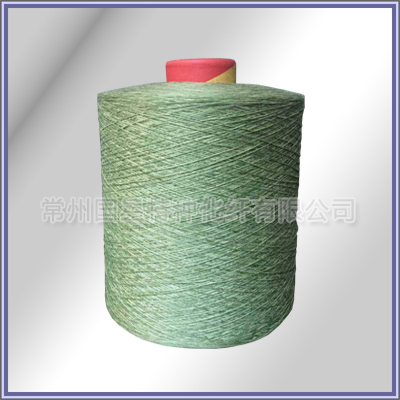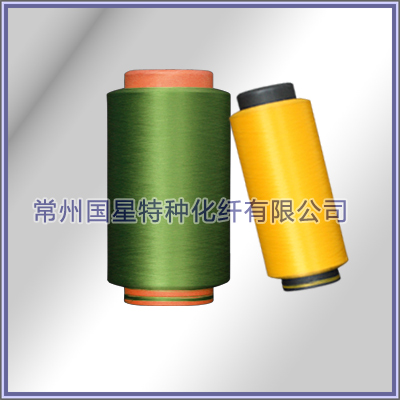In 2020, I am afraid that no industry will face huge uncertainty due to the impact of the new crown epidemic, and cotton, which is an important raw material for textiles, is no exception.
Since the first quarter of 2020, the prices of U.S. cotton, Zheng Mian, and Zheng Mian yarn have all dived all the way, and all have "stepped out" of a double-digit cliff fall, and the current downward trend is still not optimistic. The decline in cotton prices is naturally related to the current lack of demand from textile companies that are plagued by "refund orders", and the upward trend is transmitted to the cotton farmers ��intention to plant cotton. The global cotton industry chain is shrouded in the haze of the new crown epidemic. It can clear up.
Supply side
When will the embarrassing inventory move?
Sufficient inventory but few transactions
As we have experienced so far, the domestic new crown epidemic broke out in January and February 2020, and most domestic textile companies have stopped working to stop production in response to the epidemic. In late February, companies began to resume work and resumed production, and basically recovered by mid-March. Production. However, outbreaks in foreign countries continued from the end of February to March in the mainland, from Asia, Japan, South Korea, Iran, Europe, and North America. Recently, South America and Africa have also begun to increase. It seems that a global outbreak is coming.
Galaxy Futures Liu Qiannan told reporters: "As a result of the epidemic, cotton consumption expectations for the entire first quarter have been poor. Since the first quarter, the main US cotton contract has fallen from the highest point of 71.96 cents / lb to 50.68 cents / lb, a drop of 30%. ; Zheng cotton main contract fell from the highest point of 14450 yuan / ton to the lowest point of 10570 yuan / ton, a drop of 27%; Zheng cotton yarn main contract price fell from the highest point of 22460 yuan / ton to the lowest point of 17670 yuan / ton, a drop of 21.3%. In the first quarter, the cotton market experienced a major outbreak of the new crown epidemic at home and abroad, experienced locust disaster hype, experienced a plunge in crude oil, experienced a crash in European and American stock markets, and plunged cotton prices and increased volatility. "
It is reported that the current cotton commercial inventory is sufficient. The China Cotton Association Logistics Branch conducted a survey of 152 cotton delivery and supervision warehouses, social warehouses, bonded area warehouses and processing enterprise warehouses in 18 provinces and cities across the country. At the end of February, the total cotton commercial stocks in the country were about 4,972,600 tons, a decrease of 3.93 from the previous month. 10,000 tons, 407,400 tons higher than the same period last year.
However, due to the impact of the new crown epidemic in February, domestic cotton spot transactions have basically stalled. Textile companies started construction in late February, but they still mainly consume textile companies' own stocks.
Import demand drops
The reserve cotton is still uncertain
In terms of imports, Liu Qiannan said: "Due to the impact of the epidemic, the import data of cotton has not yet been announced, but in our opinion the current outbreak of foreign epidemics is expected to be very difficult to control. In the second quarter, the entire textile industry ��s demand for cotton will be affected by foreign epidemics. The impact will be reduced, and at the same time domestic cotton consumption will also be affected. Overall, the demand for imported cotton is expected to be greatly reduced. "
Another factor that cannot be ignored in the cotton supply is the reserve cotton. As we all know, the rotation of the reserve cotton started in December 2019 is a temporary restart of six years of storage and storage. It is intended to strengthen the management of the central reserve cotton, further optimize the reserve structure, and improve the quality of the reserve. In this regard, Liu Qiannan said: "From December 2, 2019 to March 31, the reserve cotton rotation has lasted 4 months. The planned purchase of the reserve cotton rotation is 786,000 tons, and the actual total turnover is 371,600 tons, accounting for 47% of the planned purchase volume. From the perspective of the total turnover of the reserve cotton rotation, the rotation of more than 300,000 tons of reserve cotton has little effect on the market. However, the current domestic cotton prices have fallen sharply, and many enterprises have operated at a loss. Under the premise of considering the overall situation of stability, it is not ruled out that in the future, the country will continue to rotate into cotton in order to ease the pressure on enterprises, thereby supporting cotton prices. "
Cotton planting intention declines, spring tillage proceeds orderly
The decline in cotton prices will directly lead to a decline in cotton planting intentions. At the end of February 2020, the China Cotton Association conducted a third survey of the intended area for cotton planting in 2425 designated farmers in 12 provinces and cities in the Mainland and Xinjiang Autonomous Region. The results show that the intended area for cotton planting in the country is 45.735 million mu in 2020 , A year-on-year decrease of 5.03%. The Yangtze River Basin is greatly affected by the epidemic situation, and there are many factors that affect the area of cotton planting, especially in Hubei Province. According to incomplete statistics, the area intended for cotton planting in the basin is 4.4491 million mu, a decrease of 9.93% year-on-year and an increase of 4.6 percentage points from the previous month. Among them, the intention to plant cotton in Hubei Province decreased by 14.53%.
In a situation where everything seems to be pessimistic, the effective control of the domestic epidemic in China has enabled the current spring farming to be carried out in an orderly manner, and this has become a blind heart-warming medicine in the current cotton market. Liu Qiannan said: "With the gradual rise in temperature, most of the country has resumed production and production, and spring sowing preparations are proceeding in an orderly manner. Among them, although the spring sowing and spring sowing in the cotton area of Xinjiang have been delayed, the overall preparation work has been orderly. The district is under the unified arrangement and guidance of the government for spring irrigation, and the preparation of farmland in northern Xinjiang is also advancing. Agricultural production in the Yellow River Basin has basically resumed, farmers can work on the farmland, and it is more convenient to purchase agricultural materials. The preparation of spring cultivation is in order. "
Demand side
Terminal transmission appears to be worrying both at home and abroad
As a textile raw material, the current insufficient start of textile enterprises directly affects the demand of the entire cotton market. Liu Qiannan said: "In January and February, due to the domestic epidemic situation, textile companies have delayed the start of construction for an average of about a month, and many companies have insufficient start-up rates at the beginning of the construction. Therefore, it is expected that the domestic epidemic situation will affect the direct consumption of cotton in one. Months to about one and a half months. With the outbreak of the international epidemic in March, export orders began to be affected. It is difficult to control foreign epidemics in a short time. We expect that the export orders will not be too good for the entire second quarter, and this The consumption of clothing will have a great impact. "
In addition, Liu Qiannan also said: "This epidemic will have a very big impact on the global economy. The global GDP growth rate is expected to decline, and the extent of the decline will be determined by the situation of overseas epidemic control. The global economic growth rate declines. For textiles and apparel with greater consumption elasticity, it will also be very heavy pressure. "
According to the latest statistics from the General Administration of Customs of China, from January to February 2020, China's textile and apparel exports amounted to US $ 29.835 billion, a year-on-year decrease of 20.0%. Among them, the export value of textiles (including textile yarns, fabrics and products) was US $ 13.773 billion, down 19.9% year-on-year; the export value of clothing (including apparel and clothing accessories) was US $ 16.062 billion, down 20.0% year-on-year. Liu Qiannan said: "This epidemic is expected to have a very large impact on terminal consumption, whether it is domestic demand or exports, and domestic demand is mainly in the first quarter, and foreign exports are mainly in the second quarter."
The weakening of terminal textile consumption is bound to be directly transmitted to the upstream raw materials. It is reported that the prices of polyester staple fiber and viscose staple fiber have continued to be low recently, the price of viscose staple fiber has dropped to a low of 9300 yuan / ton, and the price of polyester staple fiber has also dropped to 5800 Yuan / ton low point. The prices of these two types of chemical fiber are basically the lowest since 2004. The continued low prices of chemically alternative fibers also reflect the current poor downstream demand.
In terms of international demand, Liu Qiannan said: "In the March report of USDA, global cotton production increased slightly, and global cotton consumption was reduced. Among them, China's reduction was larger, which led to an increase in global cotton end-of-period inventory and an increase in inventory consumption ratio. In view of the outbreak of the global epidemic in March and April, it is expected that the USDA will continue to reduce global cotton consumption in the future, which will lead to continued increase in global cotton stocks at the end of the period. "Liu Qiannan estimates that there will be 200-300 in the future Global consumption of 10,000 tons will be reduced.
Finally, as a futures analyst, Liu Qiannan said from an operational point of view: "Whether it is the international market or the domestic market, the entire cotton price trend will be closely related to the development of the global epidemic. From an investment perspective, despite the impact of the epidemic on the United States The prices of cotton and Zheng cotton are relatively low in history. The price is expected to be low in farmers ��intentions to plant cotton, which may lead to a reduction in global cotton production. The investment value of cotton will gradually become prominent, but the major premise of this is that the global epidemic situation is basically controlled . The current market may face a major crisis that will happen once in a few decades. At this moment, it is not recommended to rush into the market. You need to wait for the bearishness and panic to be further released before you consider investing. "

 +86-519-86266888
+86-519-86266888 gxhx888@126.com
gxhx888@126.com



